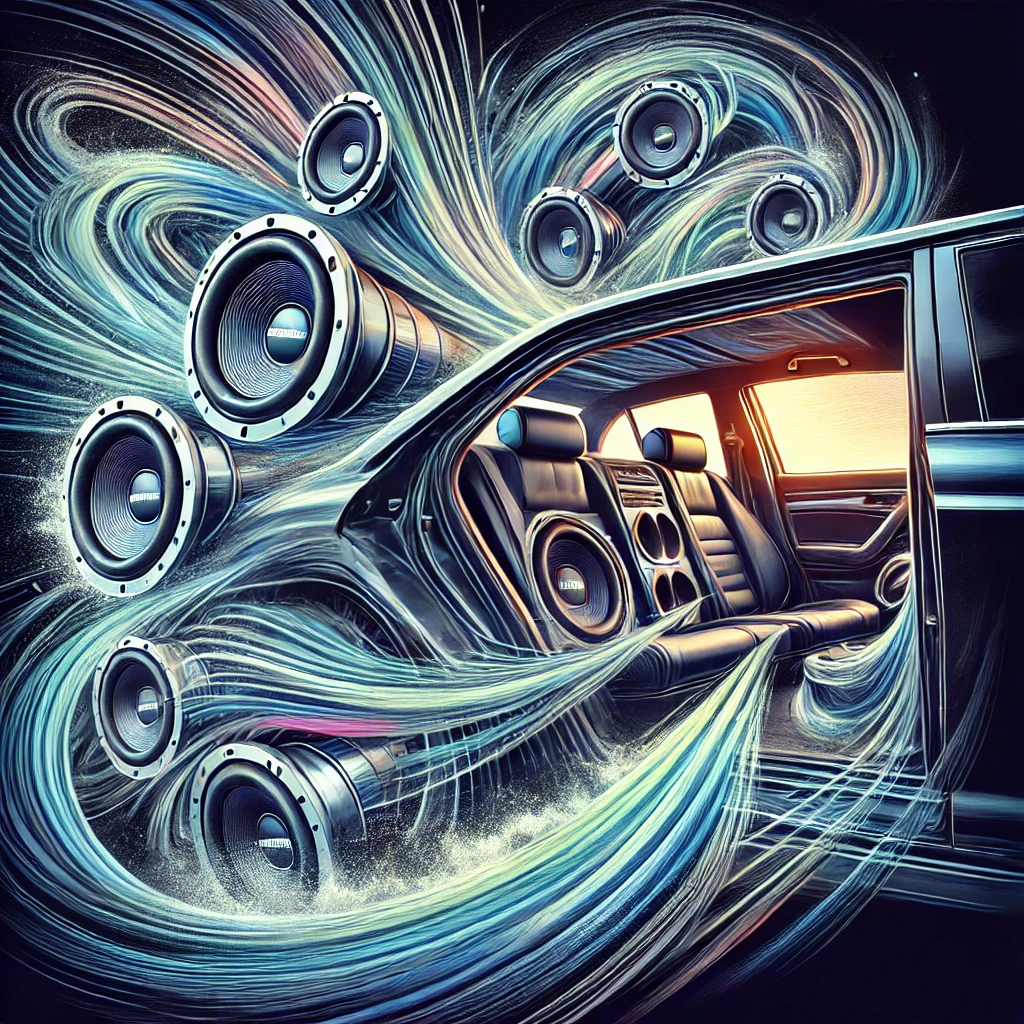Your cart is currently empty!
There’s nothing quite like sitting in a car with an audio system that moves air so forcefully it feels like a storm inside. If you’ve ever experienced a system that blows hair, shakes clothes, and makes breathing feel different, you know exactly what we’re talking about. This is commonly referred to as making your system “windy.”
Creating a windy car audio system isn’t just about cranking up the volume—it requires precise system design, enclosure tuning, and air displacement strategies. Let’s break down how you can build a system that not only sounds powerful but also creates that insane pressure and airflow.
1. Maximize Cone Area (More Surface Area = More Wind)
The most important factor in making a system “windy” is moving as much air as possible. The more cone area your subwoofers have, the more air they can push.
Best Practices:
✅ Use Multiple Subwoofers – Instead of a single high-powered sub, two or more subs with more cone surface will displace more air.
✅ Go for Large Diameter Subs – 15” and 18” subs push significantly more air than 10” or 12” models.
✅ Increase Excursion (Xmax) – Subwoofers with higher excursion (Xmax) move more air with each stroke.
✅ Choose Subs with High SPL Capability – Look for competition-grade SPL subs designed to handle extreme power.
📌 Pro Tip: A single 18” subwoofer with good excursion can be windier than two low-excursion 12” subs.
2. Use a Properly Designed Ported Enclosure
Ported enclosures (bass reflex boxes) increase airflow dramatically compared to sealed boxes. They allow the subwoofers to move air more efficiently while enhancing low-frequency output.
How to Design a Windy Box:
✅ Big Box, Big Port – A larger enclosure with a larger port moves more air.
✅ Low Tuning Frequency – Tune your box between 28-35 Hz for deep, powerful bass.
✅ High Port Area – Increase square inches of port per cubic foot of box volume (e.g., 16-20 in² per cubic foot).
✅ Use a Slot or Aeroport – Slot ports and large aeroports (flared tube ports) reduce turbulence, increasing air movement.
📌 Pro Tip: A kerfed slot port or large aeroport (6” to 10” diameter) is ideal for extreme airflow.
3. High Power Amplification (Watts Matter)
Wind requires power. The more RMS power you feed your subs, the more violently they will move air.
How to Choose the Right Amplifier:
✅ Match RMS Power to Subwoofers – If your subs can handle 2000W RMS, give them 2000W RMS (or more).
✅ Go for High-Efficiency Class D Amps – Class D amplifiers are more efficient and generate less heat.
✅ Proper Electrical System (Alternator & Battery) – Running high power (3000W-5000W RMS) requires an upgraded high-output alternator, multiple batteries, and 0-gauge wiring.
✅ Use Proper Gain Settings – Clipping kills subs; set your amplifier gain correctly to avoid distortion.
📌 Pro Tip: A powerful 5000W+ system with a strong electrical foundation will generate extreme air movement.
4. Vehicle Cabin & Box Placement (How Air Moves Matters)
The way your enclosure is placed inside the vehicle determines how well air moves through the cabin.
Best Positioning for Maximum Wind:
✅ Subs & Port Facing the Trunk Opening (for sedans) – This increases cabin pressure.
✅ Subs & Port Facing the Cabin (for SUVs & Hatchbacks) – This directs airflow directly into the cabin.
✅ Wall Builds (Extreme Wind) – A 6th order or 4th order bandpass wall can push insane amounts of air directly into the car.
📌 Pro Tip: A bandpass box with a large port facing the windshield can create extreme wind levels.
5. Bass Boosted Frequencies (The Right Notes Create More Wind)
Some bass frequencies move more air than others. Lower bass notes (below 40 Hz) generate longer sound waves that physically move more air inside the vehicle.
Best Windy Frequencies:
✅ 28-40 Hz – These deep bass notes create the most noticeable “windy” effect.
✅ SPL Songs & Test Tones – Play bass-heavy music, decaf mixes, and test tones to maximize airflow.
✅ Adjust Crossover Settings – Set your low-pass filter (LPF) to around 60-80 Hz to focus energy on deep bass.
📌 Pro Tip: Songs with long, drawn-out bass notes (like decaf bass tracks) generate stronger air movement than rapid bass beats.
6. Reinforce Your Vehicle to Handle the Pressure
A windy system creates intense pressure, which can cause vehicle flex, window distortion, and even damage.
How to Prevent Damage & Improve Performance:
✅ Sound Deadening – Apply dynamat or soundproofing to reduce unwanted flex.
✅ Strengthen Your Box – Use double-layer MDF or birch plywood to prevent box flex.
✅ Secure Your System – Windy setups can literally shake things loose, so mount everything securely.
📌 Pro Tip: If your windshield is visibly moving, you have a properly windy system.
Final Thoughts
Making your car audio system windy is about moving massive amounts of air efficiently. It’s a combination of big subs, powerful amps, proper enclosure design, and tuning your system for deep bass. If you follow these steps, you’ll be on your way to a system that not only sounds loud but also makes your car feel like it has its own weather system.
🚀 Now go build that windy system and experience true bass pressure! 🚀
Want Help Designing Your Box?
If you need a custom subwoofer enclosure design, let me know! I can help with box volume, port tuning, and optimal placement for maximum wind. Happy bass-building! 🎶🔊💨

